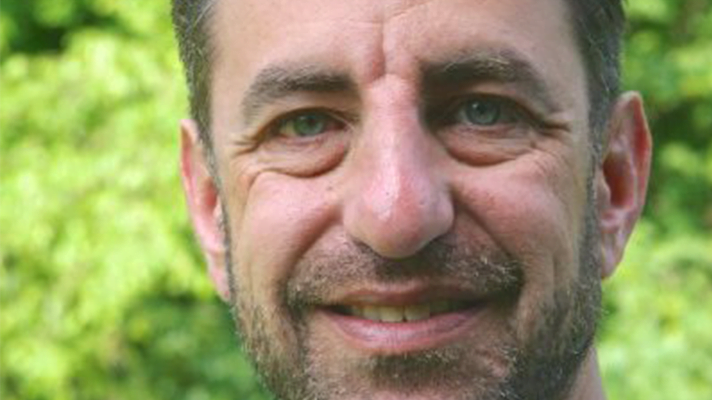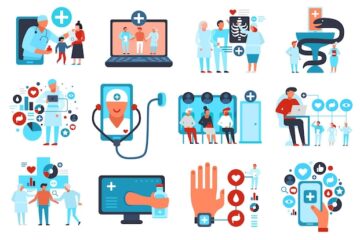
Jonathan Greenberg, director of the fast analytics program for the University of Michigan Health System, describes his small team’s approach to data crunching like this: “Break-it-down, have a quick success, have another quick success, build some momentum, and then start pulling things together in a larger way.”
If the academic medical center itself, with more than 26,000 employees, might be likened to the Navy, Greenberg said, the five-person Fast Analytics squad is akin to a Seal Team: an agile, mission-driven group of skilled specialists.
Its mission (to mix metaphors) is to “find and destroy low-hanging fruit,” he said. “We are able to focus on very specific tasks for a specific amount of time, using specific tools and staff and skills.”
By tapping into automation and data visualization techniques, the team has been able to notch some valuable tactical victories in recent years, driving operational efficiencies across the three-hospital, 990-bed health system.
“We’ve eliminated more than 10,000 hours of work by automating processes,” Greenberg explained. “We’ve recovered $3 million in RAC money. We’ve improved our mission of patients and families first by helping our end support group.”
Another mission has been to assist more than other divisions across UMHS implement dashboards, powered by Tableau Software, to do more with their own data. More than two dozen other departments are now able to share their visualizations and reports.
“Our original goals were really focused on just providing a better reporting environment,” Greenberg said. “In 2006, when I came into this role, we were printing 60,000 pages of reports and shipping them around the institution. Real early on, we moved that to a website, but it was still just sharing paper reports on the Web.
“My staff and I were doing a lot of research into reporting tools and data visualization and started looking into that as a science and an art,” he added. “After reviewing about 14 different packages, we picked Tableau for data visualization as sort of a Swiss Army Knife. That was our goal. We wanted to give people the ability to look at different dimensions and measures within data.”
The Fast Analytics squad was able to do that in pretty short order. “But a funny thing happened on the way to building this team. We discovered that some of the same skills and tools we used to build dashboards also netted a significant savings in terms of hours we had to work because we were able to automate many of the processes folks had been doing through spreadsheet wrangling and other data- or copy/paste-intensive practices,” said Greenberg.
Broadening mandates
A decade later, having built a reputation for itself across the health system for “showing up, solving a problem and moving on,” the Fast Analytics team has recently been charged with broadening its mandate – moving beyond mere revenue cycle and expanding its focus to include more enterprise-wide data improvements.
“Our mission is to be part of a larger analytics organization that has kind of a three-tiered approach,” said Greenberg. “Data governance, resources – hardware and software – and then the front-end data visualization analytics our team provides.”
One successful tactic used by the FA team is called the “one-hour challenge,” he said.
“We sit down with our customers, help them do an initial brainstorm of all their problems, break them down into smaller problems until we finally find one where they have some data we understand – then we go off and spend one hour doing some programming, and we come back, ideally, with an 80 percent solution,” Greenberg explained.
“We’ve found that when we work with customers very closely and very cautiously, we find out that they learn more about our tools, so the requests they have for that last 20 percent – the most expensive 20 percent of a project – change when they find our what the tools can do.”
Moreover, “we learn their data and their processes so we can make better suggestions for that last 20 percent. And what we find is that a lot of times those 80 percent solutions are good enough to get people up and running: It saves money, saves time and gets them better information.”
Advice for hospitals of any size
If UMHS, with more than 2.3 million visits and 50,000 hospital stays each year, may seem a unique place for projects such as these, Greenberg said the tactical success stories can be emulated anywhere.
“I don’t believe you need a huge organization to have these results,” he said. “We’ve done it with anywhere from eight to five people.”
His advice to other hospitals looking to gain efficiencies with analytics: “Start small and focus.” Find modest-sized, actionable problems and think creatively about how data can be deployed to solve them.
At UMHS, “the technology helps,” he said, but people are key.
“There’s a lot of really clever, artistic and scientific work that goes into the data management in the background,” said Greenberg. “And I think the reason we’ve managed to have these kinds of successes is because we’ve ben able to think outside of a matrix organization and ignore boundaries. That sort of thing has really made a big difference in our ability to get our hands on data and combine data and make solutions out of data that otherwise might have been politically incorrect or whatever you want to call it.”
That spirit of experimentation can be replicated anywhere, he added.
“I’m a strong believer in real innovation and not just lip service,” said Greenberg, noting that he’s a fan of Malcolm Gladwell’s definition of the phrase: “Innovation is a combination of things that weren’t combined in a new way before.”
Toward that end, “I encourage my staff to only work 80 percent of the time,” he said. “I want them experimenting. I want them being creative and failing. I want them finding that clever combination of things that nobody’s thought of before. That is how you jump the organization forward in terms of productivity.”
Smaller hospitals can embrace that spirit just as wholeheartedly as a world-class academic medical center, said Greenberg. “You don’t need huge numbers of staff to produce good products and valuable products and job-changing products. Smaller organizations don’t need to invest super huge sums of money in order to get these kinds of results. What they need to invest in is a certain type of team, certain tools.”
[Source:- Healthcare it news]




